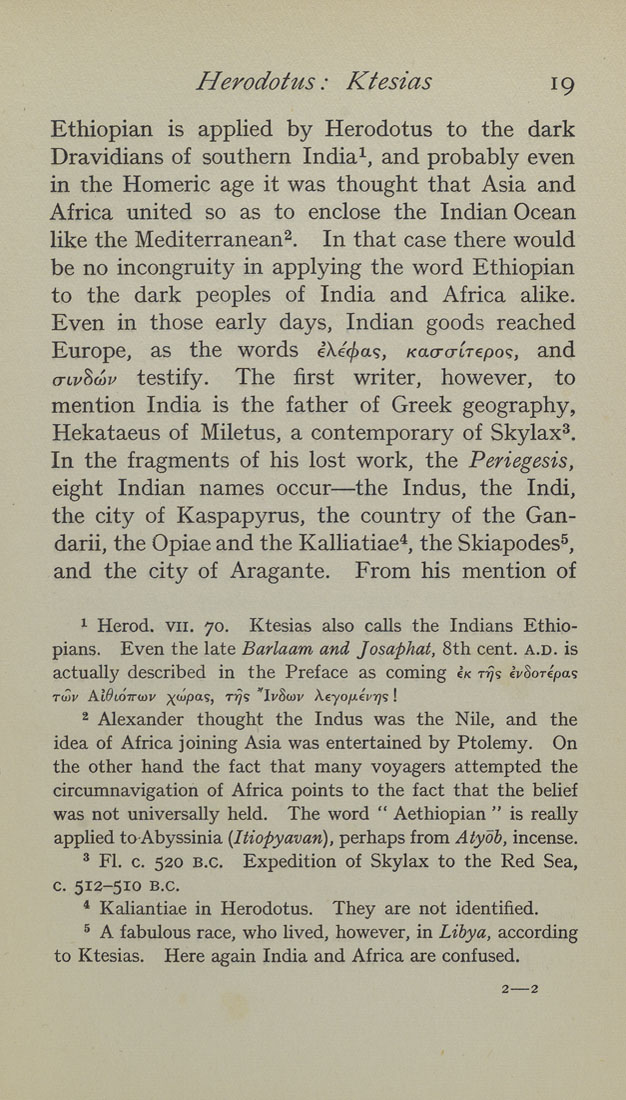Herodotus: Ktesias 19
Ethiopian is applied by Herodotus to the dark
Dravidians of southern India^, and probably even
in the Homeric age it was thought that Asia and
Africa united so as to enclose the Indian Ocean
like the Mediterranean^. In that case there would
be no incongruity in applying the word Ethiopian
to the dark peoples of India and Africa alike.
Even in those early days, Indian goods reached
Europe, as the words iXecfyaq, Kacro-iTepo^;, and
(TLvhtov testify. The first writer, however, to
mention India is the father of Greek geography,
Hekataeus of Miletus, a contemporary of Skylax^.
In the fragments of his lost work, the Periegesis,
eight Indian names occur—the Indus, the Indi,
the city of Kaspapyrus, the country of the Gan-
darii, the Opiae and the Kalliatiae^ the Skiapodes^,
and the city of Aragante. From his mention of
^ Herod, vii. 70. Ktesias also calls the Indians Ethio¬
pians. Even the late Barlaam and Josaphat, 8th cent. a.d. is
actually described in the Preface as coming ck Trjs ei/Sorepa?
Tuiv AiOtOTTftiv ^(oupa?, Tr]<; IvSwv Aeyop.ecijs !
2 Alexander thought the Indus was the Nile, and the
idea of Africa joining Asia was entertained by Ptolemy. On
the other hand the fact that many voyagers attempted the
circumnavigation of Africa points to the fact that the belief
was not universally held. The word " Aethiopian " is really
applied to Abyssinia {Itiopyavan), perhaps from Atyob, incense.
^ Fl. c. 520 B.C. Expedition of Skylax to the Red Sea,
c. 512-510 B.c,
* Kaliantiae in Herodotus, They are not identified,
^ A fabulous race, who lived, however, in Libya, according
to Ktesias. Here again India and Africa are confused.
|








